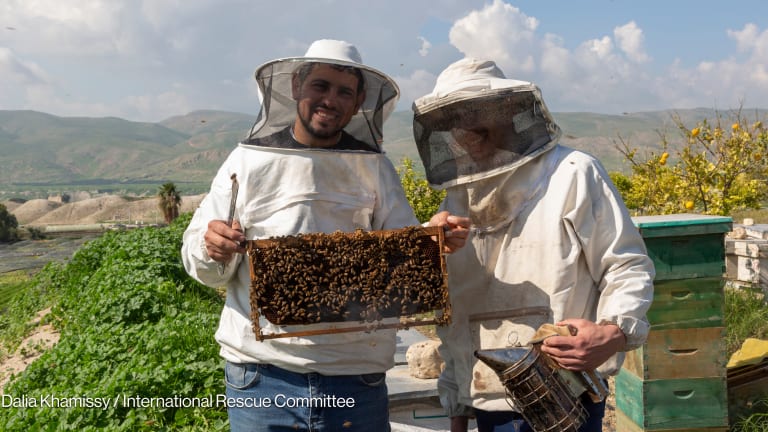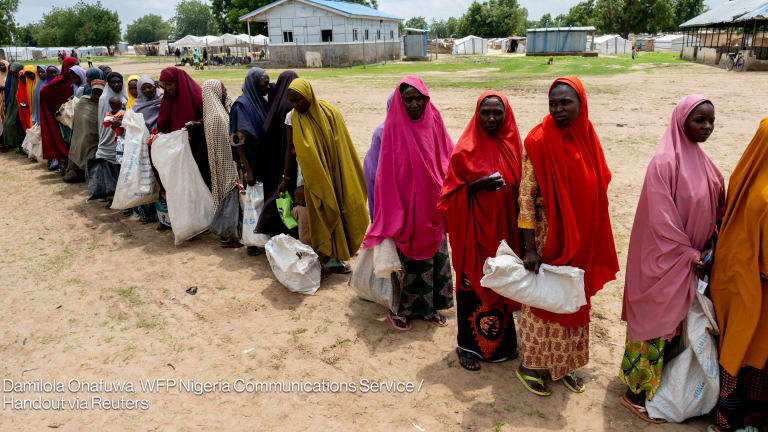
Global conflict and disaster continue to displace millions of people, and to stretch the bounds of the global humanitarian aid architecture. At the same time, migration is not only a direct consequence of conflict and disaster, but is also an integral part of the social and economic fabric of our world.
Globally, migration makes essential contributions to the economic, social and cultural development of host countries and communities back home. Against a backdrop of unprecedented levels of human mobility, especially those fleeing conflict and persecution, in no other field has the promotion of resilience become as important as in the management of migration and displacement.
With some 232 million international and 740 million internal migrants in the world, evidence indicates that one of the fundamental reasons that so many people are on the move is to seek out better opportunities — livelihoods, education and general security — for themselves and their families.
“The humanitarian system needs to evolve and change, and this includes how we address migration and displacement.”
— Louis Hoffmann, head of transition and recovery at the International Organization for MigrationWhile crisis often provides the impetus for moving in the first place, research indicates that — along the way — migrants constantly assess options and strategies as new risks or opportunities emerge.
Mobility, including flight, is intrinsically linked with the drive to improve circumstances, conditions and opportunities — all of which are essential building blocks of resilience.
In 2015, the number of internally displaced, refugees and asylum-seekers reached nearly 60 million.
The majority of displacement situations were conflict-induced and protracted, with estimates suggesting that the average length of displacement was a staggering 17 years, while sustainable solutions in the form of return were at a historic low.
In lieu of lasting solutions, resilience will be crucial in determining how well affected populations cope with prolonged exposure to the stresses of displacement, and, more fundamentally, how they assess conditions, the risks associated with onward mobility, and the potential opportunities.
Lack of political will to resolve current crises has resulted in increased levels of vulnerability; dependency on short-term humanitarian relief; exposure to criminal smuggling and trafficking networks, as European countries close borders and tighten asylum rules; and long-term human development losses that erode efforts to “leave no one behind” as part of the Sustainable Development Goals.
Newer and more effective ways of assisting affected populations, and in particular those on the move, is increasingly recognized as essential.
The Syria crisis
Read our stories from #AcrossBorders: Origins
► DevExplains: Refugee vs. migrant
► Can we get smarter at preventing people from fleeing?
► Toward WHS 2016: The world must step up its political commitment
► Pharmaceutical companies donating medicines in crisis situations
Nowhere are these dynamics more evident than in Syria, the impacts of which affect the region and further afield. As the crisis continues, half of the country’s population is displaced. More than three in four Syrians are now living in poverty. The suffering caused by this crisis has galvanized an international consensus on the need for a systemic shift in thinking and new approaches to addressing displacement. It has become evident that an exclusive focus on relief delivery is neither sufficient nor sustainable.
The United Nation’s High-Level Panel on Humanitarian Financing in its recent report called on donors and implementing organizations to come together in a “grand bargain,” through which to improve the efficiency of humanitarian assistance by being more flexible on one side and more transparent and effective on the other.
In responding to the crisis in Syria, last year, less than 45 percent of funding needs were met. Against the backdrop of an overstretched aid infrastructure, governments, the U.N. system, international and national nongovernmental organizations, civil society and the private sector convened the Resilience Development Forum in Jordan in November 2015, and confirmed a joint commitment to enhancing resilience among people affected by the Syria crisis.
Further, multiple displacement crises across the globe has coalesced global opinion on the need to make the humanitarian system more effective and efficient to achieve better, more sustainable results for the people it serves.
Resolving displacement situations: A strategic framework
Disaster-affected populations have long been recognized as critical agents of recovery. Similarly, the international community is coming to recognize the important capacities that migrants and displaced peoples are constantly bringing to “mobility decisions” that seek to maximize safety, better circumstances and opportunities.
To align its operational response to these realities, the International Organization for Migration has assessed its institutional approach to promoting “solutions” and developed a framework on the Progressive Resolution of Displacement Situations.
This framework recognizes that solutions are achieved incrementally, through multistakeholder efforts, by building on the positive coping and self-reliance strategies employed by the displaced themselves, and in conjunction with the communities that host them. It seeks to promote environments that are conducive to solutions by addressing root causes, and by stressing resilience.
Building resilience is central to the PRDS. Resilience entails the capacity of a system, community or individual to anticipate, mitigate, respond to and influence the impact of shocks and stresses.
Predicated on the understanding that core protection and lifesaving needs have been met, IOM’s approach to resilience recognizes movement as central to allowing people to preserve or increase available resources and opportunities, enabling them to save their lives or access basic assistance, or to enhance livelihood opportunities.
The resulting patterns of mobility are a crucial component of resilience, and supporting mobility-based solutions will have significant implications for people’s capacity to cope during situations of protracted displacement.
Translating principles into action
Even when we understand the unique need to support resilience, there is still much to do in more effectively delivering on this commitment.
A new resilience strategy
Reflecting similar efforts on the part of many government and agency partners, the International Organization for Migration is promoting a resilience strategy in response to the Syria crisis that seeks to promote individual agency, self-reliance and coping of affected populations to more effectively address the conditions of their displacement and to reduce factors that create both vulnerability and humanitarian need.
The strategy requires the combined implementation of three interlinked pillars of work, namely: promoting/creating livelihood opportunities; restoring basic infrastructure and essential services; and supporting social cohesion.
Overall, IOM’s use of a “resilience lens” on migration and displacement reflects its commitment to rethinking how assistance is delivered. The approach increasingly recognizes the inherent “resilience-value” that resonates in the decisions and motivations of migrants and the displaced themselves.
The humanitarian system needs to evolve and change, and this includes how we address migration and displacement.
In recognition of the benefits of managed migration, which begins with providing a strong baseline for asylum and protection, the humanitarian system must look at comprehensively supporting the dignity and inherent capacities of migrants themselves. It must shift focus from merely managing humanitarian caseloads to an approach that recognizes migrants as socio-economic assets and contributors, and that builds the resilience of both the displaced and host communities.
We must look more positively on the wider phenomenon of migration, including remittances and the potential for investment and economic development spurred by migrant creativity, ingenuity and determination. More efforts are needed to promote labor mobility options and regular channels for migration.
At the same time, protection of rights and access to asylum must be upheld and, importantly, migrants must be distinguished from those committing acts of violence — those from whom many migrants are protecting themselves and their families.
Across Borders is a monthlong online conversation hosted by Devex and partners — World Vision, the European Commission's Humanitarian Aid and Civil Protection department, the U.S. nonprofit partner of the International Organization for Migration and United Nations Volunteers — to analyze and amplify the discussion on global migration and current refugee crises through the lens of global security, development cooperation and humanitarian aid work, and more. Visit the campaign site and join the conversation on social media tagging @devex and #AcrossBorders.








